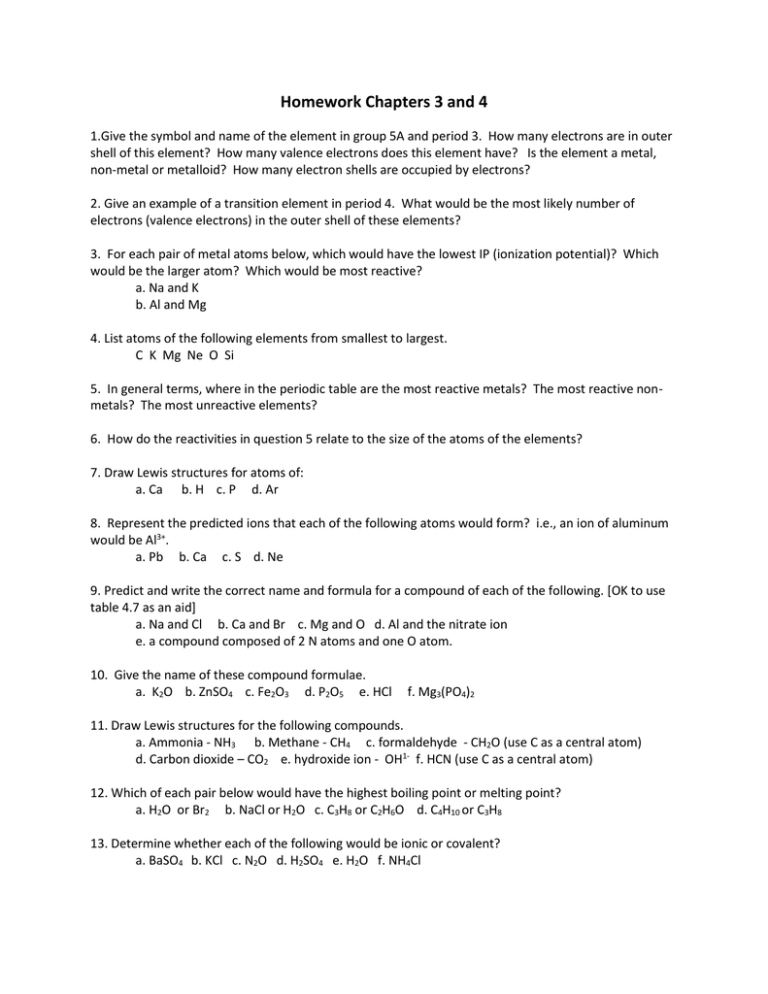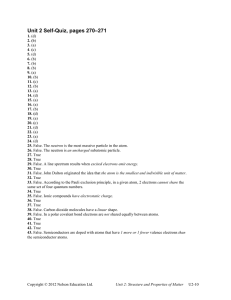Homework Chapters 3 and 4
advertisement

Homework Chapters 3 and 4 1.Give the symbol and name of the element in group 5A and period 3. How many electrons are in outer shell of this element? How many valence electrons does this element have? Is the element a metal, non-metal or metalloid? How many electron shells are occupied by electrons? 2. Give an example of a transition element in period 4. What would be the most likely number of electrons (valence electrons) in the outer shell of these elements? 3. For each pair of metal atoms below, which would have the lowest IP (ionization potential)? Which would be the larger atom? Which would be most reactive? a. Na and K b. Al and Mg 4. List atoms of the following elements from smallest to largest. C K Mg Ne O Si 5. In general terms, where in the periodic table are the most reactive metals? The most reactive nonmetals? The most unreactive elements? 6. How do the reactivities in question 5 relate to the size of the atoms of the elements? 7. Draw Lewis structures for atoms of: a. Ca b. H c. P d. Ar 8. Represent the predicted ions that each of the following atoms would form? i.e., an ion of aluminum would be Al3+. a. Pb b. Ca c. S d. Ne 9. Predict and write the correct name and formula for a compound of each of the following. [OK to use table 4.7 as an aid] a. Na and Cl b. Ca and Br c. Mg and O d. Al and the nitrate ion e. a compound composed of 2 N atoms and one O atom. 10. Give the name of these compound formulae. a. K2O b. ZnSO4 c. Fe2O3 d. P2O5 e. HCl f. Mg3(PO4)2 11. Draw Lewis structures for the following compounds. a. Ammonia - NH3 b. Methane - CH4 c. formaldehyde - CH2O (use C as a central atom) d. Carbon dioxide – CO2 e. hydroxide ion - OH1- f. HCN (use C as a central atom) 12. Which of each pair below would have the highest boiling point or melting point? a. H2O or Br2 b. NaCl or H2O c. C3H8 or C2H6O d. C4H10 or C3H8 13. Determine whether each of the following would be ionic or covalent? a. BaSO4 b. KCl c. N2O d. H2SO4 e. H2O f. NH4Cl








